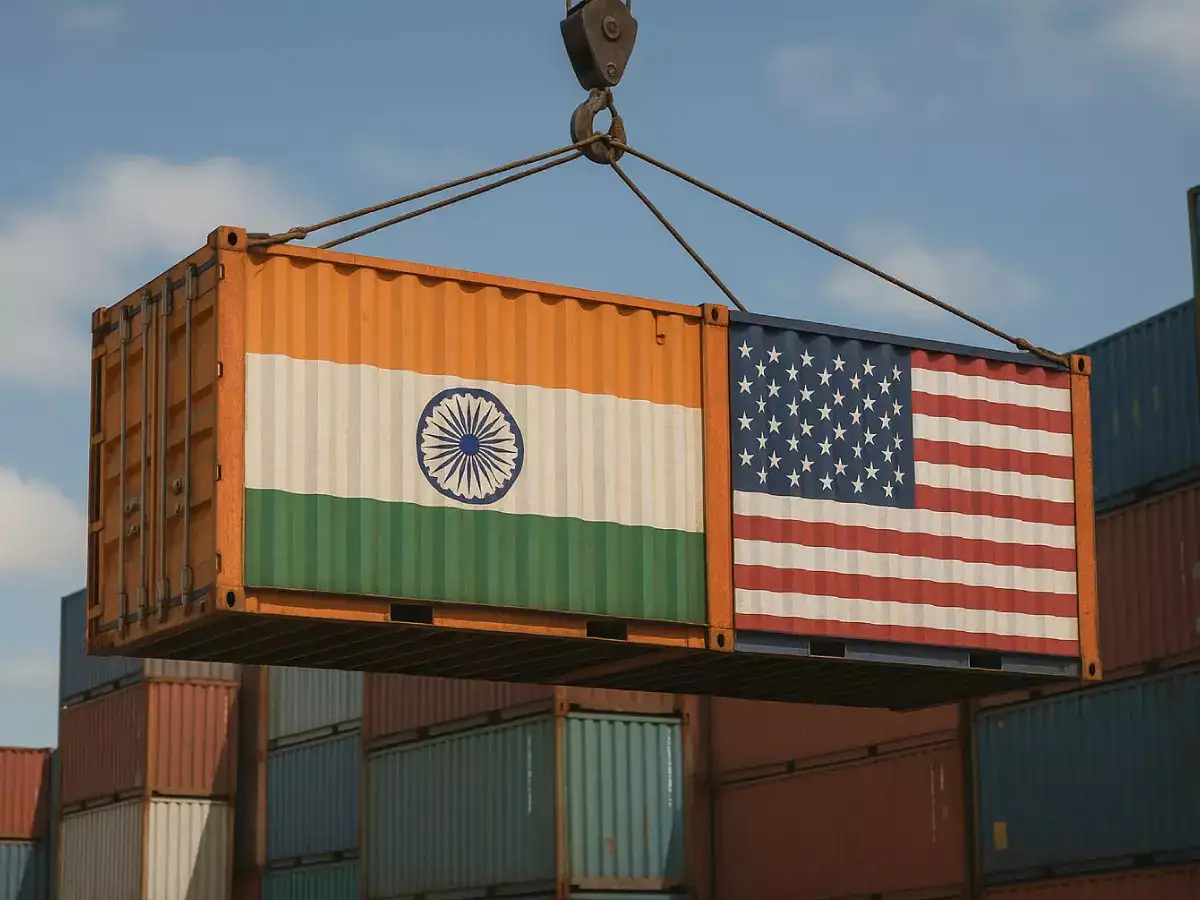
US Tariffs and the Indian Economy: Navigating Challenges and Seizing Future Opportunities
Naman Chopra, Intern Investment & Reseach
India's economy finds itself at a pivotal crossroads amid the rising tide of global protectionism, particularly following recent US tariff measures. While these trade barriers present immediate challenges, they simultaneously offer strategic advantages due to India's unique economic structure.
The Current Tariff Landscape
The proposed tariff structure places India in a relatively advantageous position compared to some of its competitors in Asia. While Indian exports would face a 26% duty when the higher tariffs take effect, this rate is substantially lower than the 46% for Vietnam, 36% for Thailand,37% for Bangladesh, and the steep 54% for China
Immediate Economic Impacts for India
The implementation of these tariffs poses significant immediate challenges for India's export-oriented sectors, particularly those heavily dependent on the US market. According to projections, if Trump follows through with the full tariff plan after the current pause expires, India could experience a $7.76 billion—or 6.4%—reduction in exports to the United States this year This substantial decline would directly impact industries such as textiles, automotive components, and steel manufacturing
The manufacturing sector, which the Indian government has targeted for expansion through initiatives like "Make in India," may face particular challenges in maintaining growth momentum under increased tariff pressure
Currency dynamics add another layer of complexity to the tariff impact assessment. Trade tensions often trigger capital outflows from emerging markets, potentially weakening the Indian rupee against the US dollar. This currency depreciation creates a mixed economic impact—while it might theoretically make exports more competitive in unaffected markets, it simultaneously increases import costs, particularly problematic for a nation that imports 87% of its crude oil requirements in dollar-denominated transactions
India's Unique Economic Position
India's economic structure provides it with distinctive buffers against trade disruptions that many of its Asian counterparts lack. Unlike export-dependent economies such as Vietnam and Thailand, where exports constitute 87% and 65% of GDP respectively, India's economy remains primarily anchored by domestic consumption, with exports of goods and services accounting for approximately one-fifth of its economic output
Further strengthening India's resilience is the composition of its financial markets, where over80% of the equity market is domestically owned. This substantial local investor base characterized by consistent capital inflows through systematic investment plans, helps stabilize asset prices against volatility triggered by foreign investor movements during turbulent periods
Strategic Opportunities Amid Trade Disruptions
1. Accelerating Manufacturing Self-Reliance
As global manufacturers increasingly seek to diversify their supply chains beyond traditional hubs, India's relatively lower tariff exposure compared to major competitors like Vietnam and Thailand enhances its attractiveness as an alternative manufacturing destination. This comparative advantage in the tariff environment could accelerate the "Make in India" initiative's progress, particularly in sectors where India already possesses established capabilities or clear developmental potential
2. Leveraging Bilateral Trade Negotiations
The 90-day tariff suspension period presents a critical window for India to negotiate favorable trade terms with the United States, potentially securing arrangements that support long-term economic objectives. Indian and US trade representatives have been actively engaged in discussions aimed at developing a comprehensive bilateral agreement since Indian Prime Minister Narendra Modi's visit to Washington in February, where both leaders ambitiously pledged to expand two-way trade fourfold to $500 billion by 2030
3. Future Outlook and Strategic Recommendations
To fully capitalize on the potential advantages presented by the evolving trade environment, India must implement a coordinated set of policy measures addressing both immediate challenges and long-term structural transformations. In the short term, targeted support for export sectors most affected by US tariffs could help maintain market positions while transitioning strategies are developed. Simultaneously, accelerating infrastructure development in key industrial corridors would enhance India's attractiveness for manufacturing investments seeking alternatives to more heavily tariffed locations
Conclusion
The current tariff challenges facing India's economy represent a pivotal moment that could either constrain growth or accelerate structural transformation, depending on policy responses and strategic decisions. While immediate export disruptions pose genuine concerns for affected sectors, India's relatively insulated economic structure provides natural buffers against these shocks that many competitor nations lack. This comparative resilience creates a foundation for strategic maneuvering that could strengthen India's long-term economic positioning if properly leveraged.
